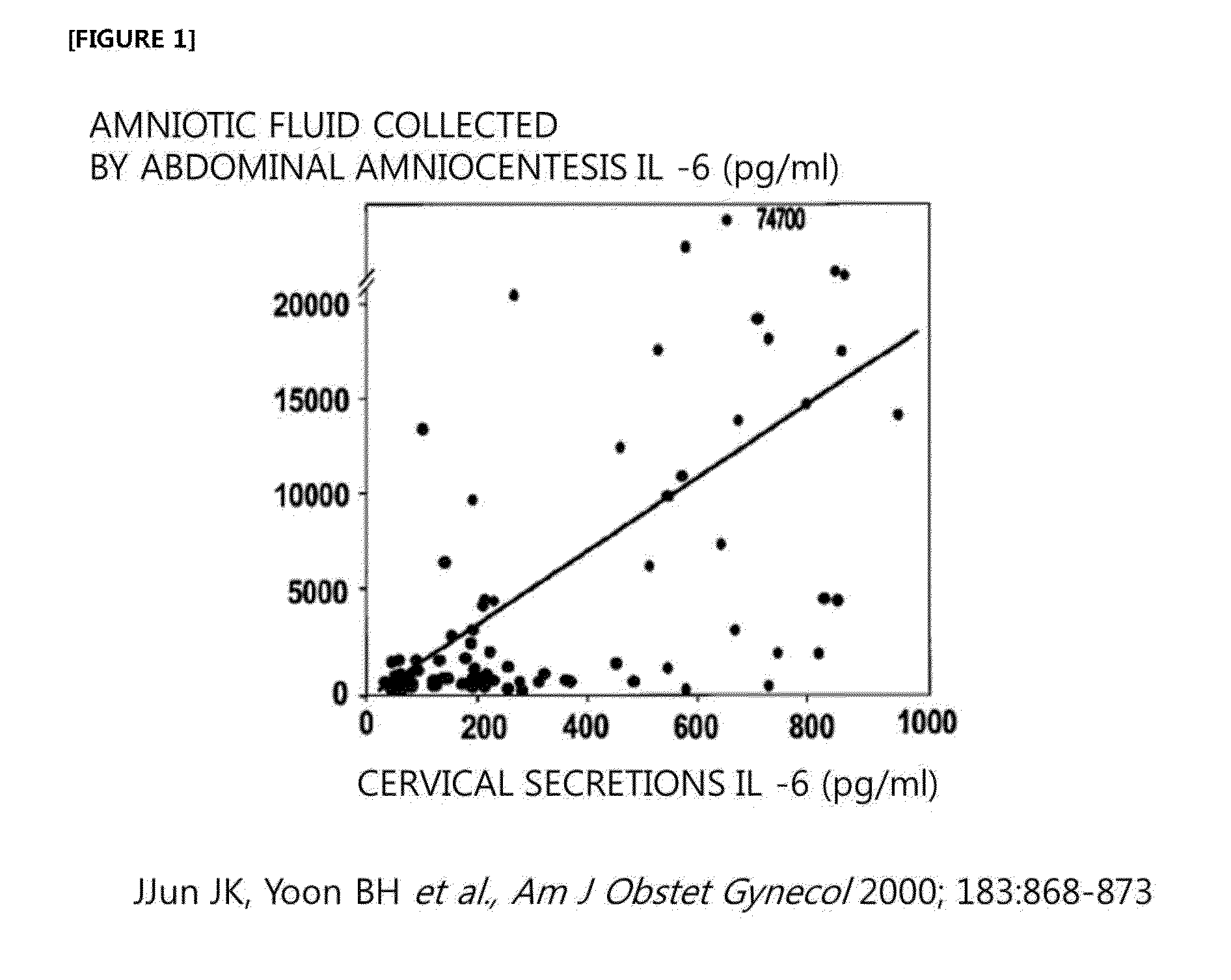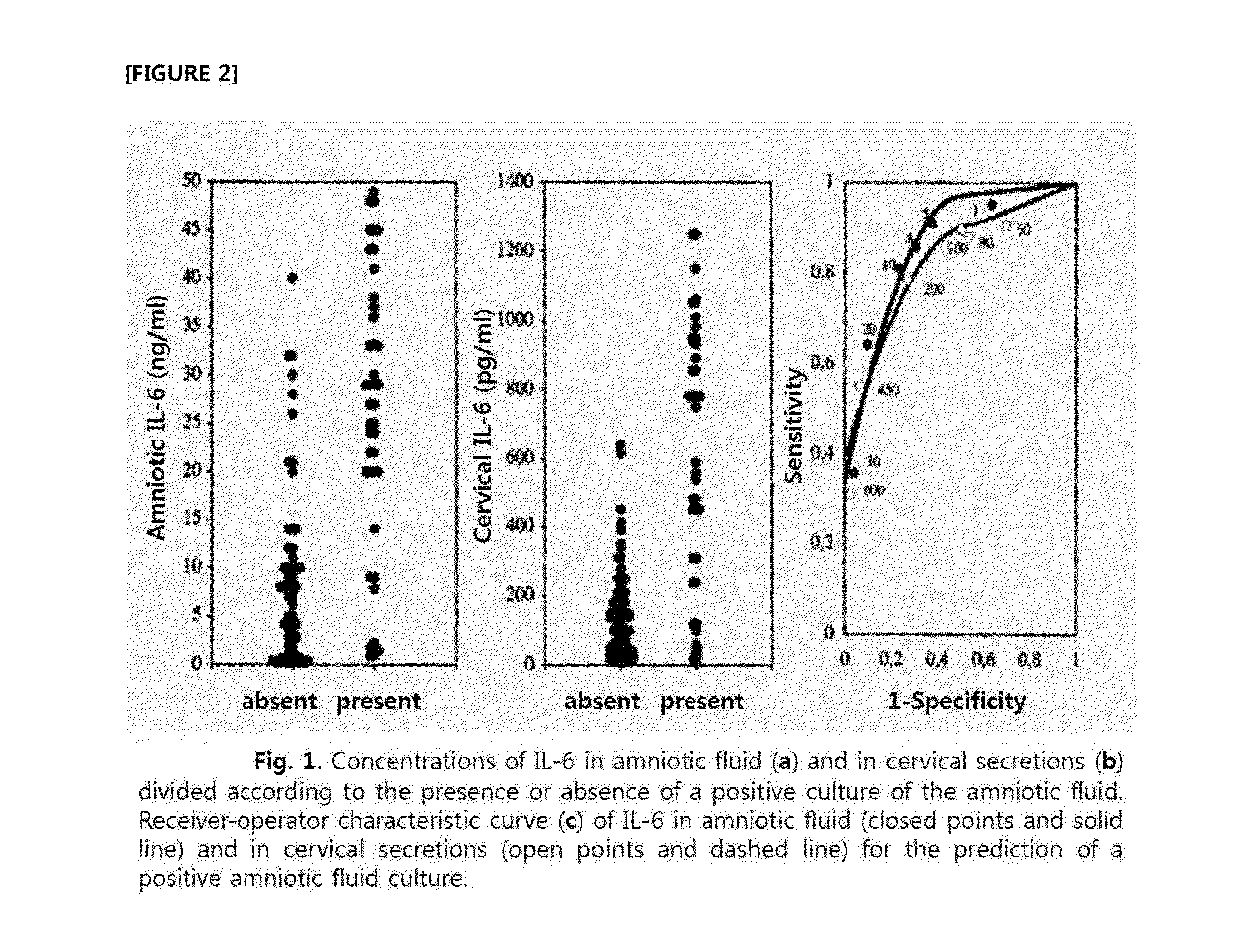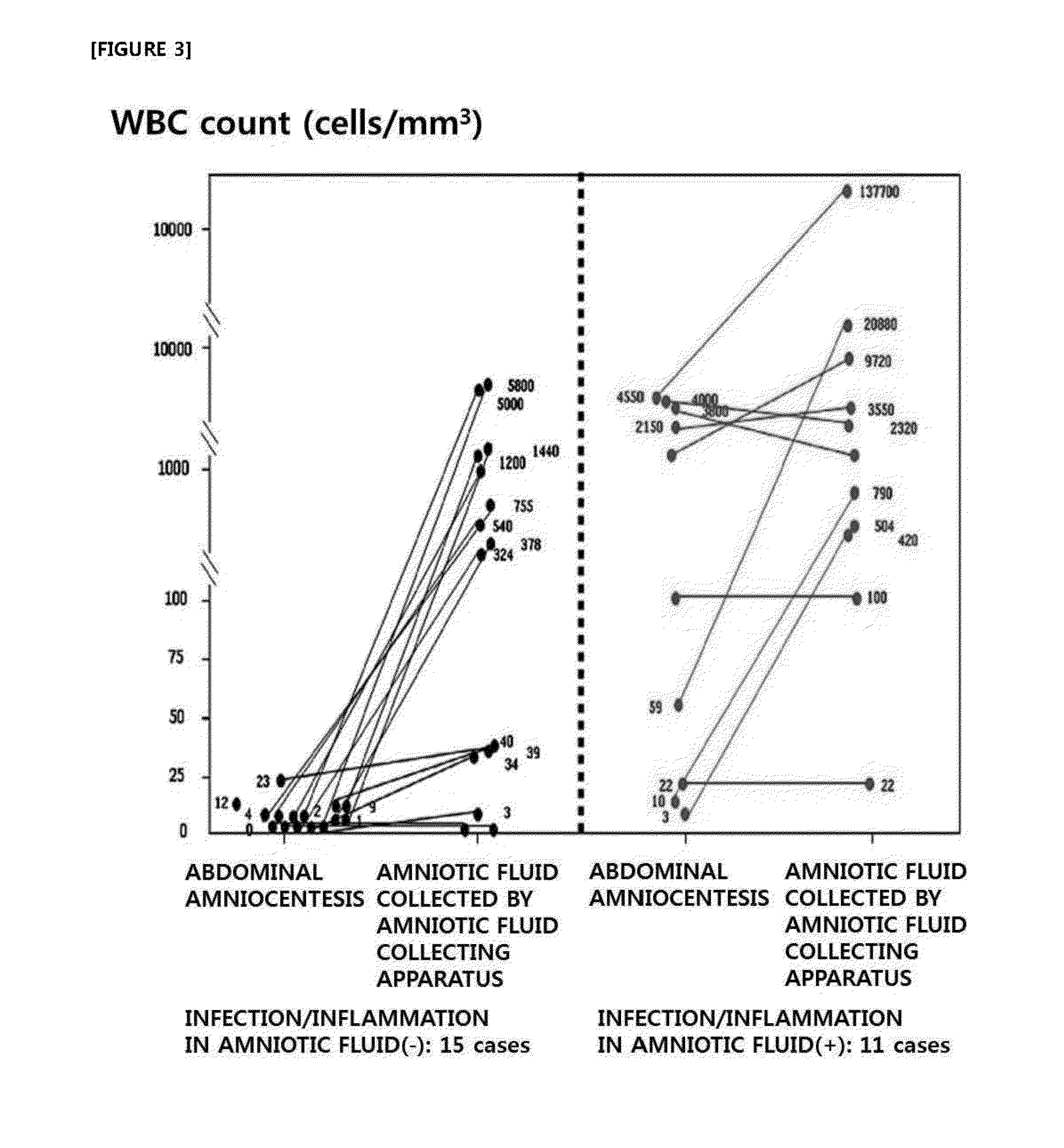Method for noninvasive prediction or diagnosis of inflammation and infection in amniotic fluid of patients with premature rupture of membranes
a technology of amniotic fluid and amniotic fluid, which is applied in the field of noninvasive prediction or diagnosis of inflammation and infection in amniotic fluid, can solve the problems of difficult to apply the cut-off value of il-6 in amniotic fluid collected by abdominal amniocentesis to cervical secretion, and the inability to predict inflammation or infection in vaginal fluid. it can be more stably performed on pregnant women
- Summary
- Abstract
- Description
- Claims
- Application Information
AI Technical Summary
Benefits of technology
Problems solved by technology
Method used
Image
Examples
example 1
Using IL-6 for Measuring Inflammation and / or Infection in Amniotic Fluid
[0087] Study Subject
[0088]Amniotic fluid obtained by abdominal amniocentesis and amniotic fluid leaked from cervix into the vagina were collected from 18 pregnant mothers with premature rupture of membranes. The concentration of IL-6 was measured and compared by performing ELISA analysis on the above collected amniotic fluids using antibody against IL-6 (R&D system, Minneapolis, Minn.).
[0089] Definition of ┌Infection and Inflammation in Amniotic Fluid┘
[0090]‘Infection and inflammation in amniotic fluid’ is defined by culturing aerobic and anaerobic bacteria and genital mycoplasmas and by counting the number of white blood cells in the amniotic fluid collected by abdominal amniocentesis. In ‘infection and inflammation in amniotic fluid’, amniotic fluid infection is defined by the culture of aerobic bacteria, anaerobic bacteria and genital mycoplasma in the amniotic fluid, and amniotic fluid inflammation is define...
example 2
Using IL-8 for Measuring Inflammation and / or Infection in Amniotic Fluid
[0095] Analysis of Inflammation and / or Infection in Amniotic Fluid from Transabdominal Amniocentesis and Amniotic Fluid Leaked Through the Cervix into the Vagina
[0096]By using the test subjects from Example , the concentration of IL-8 was measured by ELISA analysis using 2 pg / ml of co-antibody-human IL-8 monoclonal anti body (Pierce endogen) and 0.05 ug / ml of biotinylated detecting antibody-anti-human IL-8 monoclonal antibody(pierce endogen). ‘Infection and inflammation in amniotic fluid’ was determined by the method of Example .
[0097]As a result, the concentration of IL-8 indicating inflammation and / or infection in amniotic fluid in patients with premature rupture of the membrane was defined as 6 ng / ml. Eight patients were confirmed as positive for ‘inflammation or infection’ in amniotic fluid collected by transabdominal amniocentesis. Out of these patients, 6 patients showed 6 ng / ml or higher concentration of ...
example 3
Using IL-1β for Measuring Inflammation and / or Infection in Amniotic Fluid
[0101] Analysis of Inflammation and / or Infection in Amniotic Fluid from Transabdominal Amniocentesis and Amniotic Fluid Leaked Through the Cervix into the Vagina
[0102]By using the test subjects from Example , the concentration of IL-1β was measured by ELISA analysis using Douset ELISA development system, human IL-1 beta / IF2 (R&D), and ‘infection and inflammation in amniotic fluid’ was determined by the method of Example .
[0103]As a result, the concentration of IL-1β indicating inflammation and / or infection in amniotic fluid in patients with premature rupture of membranes was defined as 200 pg / ml. Out of the eight patients who were confirmed as positive for ‘inflammation or infection’ in amniotic fluid collected by transabdominal amniocentesis, 7 patients showed 200 pg / ml or higher concentration of IL-1β in the amniotic fluid that was leaked from the cervix to vagina. Therefore, when the cut-off values of IL-1β ...
PUM
| Property | Measurement | Unit |
|---|---|---|
| concentration | aaaaa | aaaaa |
| concentration | aaaaa | aaaaa |
| concentration | aaaaa | aaaaa |
Abstract
Description
Claims
Application Information
 Login to View More
Login to View More - R&D
- Intellectual Property
- Life Sciences
- Materials
- Tech Scout
- Unparalleled Data Quality
- Higher Quality Content
- 60% Fewer Hallucinations
Browse by: Latest US Patents, China's latest patents, Technical Efficacy Thesaurus, Application Domain, Technology Topic, Popular Technical Reports.
© 2025 PatSnap. All rights reserved.Legal|Privacy policy|Modern Slavery Act Transparency Statement|Sitemap|About US| Contact US: help@patsnap.com



